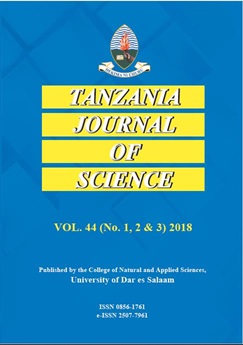The power of coefficients and methods of coding in delimiting species using phenetic approach: the case of African Solanum section Solanum sensu edmonds
Abstract
Phenetics is one of approaches used to delimit species in plant classification. Conclusion in phenetics is based on overall similarity often of morphological data. The approach uses coded data that are analyzed using coefficients to create similarity matrices that are analyzed using clustering analysis to create the classification. Exists different similarity coefficients and coding methods though in practice are used intuitively sometimes giving results that have been challenged. Though similarity coefficients and coding methods have some times been blamed, studies to analyze their influences are limited. The trend however is to avoid morphological data in favor of DNA markers. The current study assessed the power of eight similarity coefficients to recover ten known section Solanum species that have also been delimited using AFLPs. Each similarity coefficient was used to analyze two similarity matrices created using two Pledji ' s binary or conventional methods of coding multistate characteristics. Analysis used clustering option of PAST ' s software. The ten species were recovered from each matrix only when Gower ' s or Hamming ' s coefficients were used. Jaccard ' s and Dice coefficients recovered ten species only with binary coding. Other coefficients recovered zero to five species. Coefficients of similarity and coding method thus influences species level classification in phenetic approach.
Key words: Phenetic approach, similarity coefficients, UPGMA, Section Solanum, cophenetic coefficient, morphology


